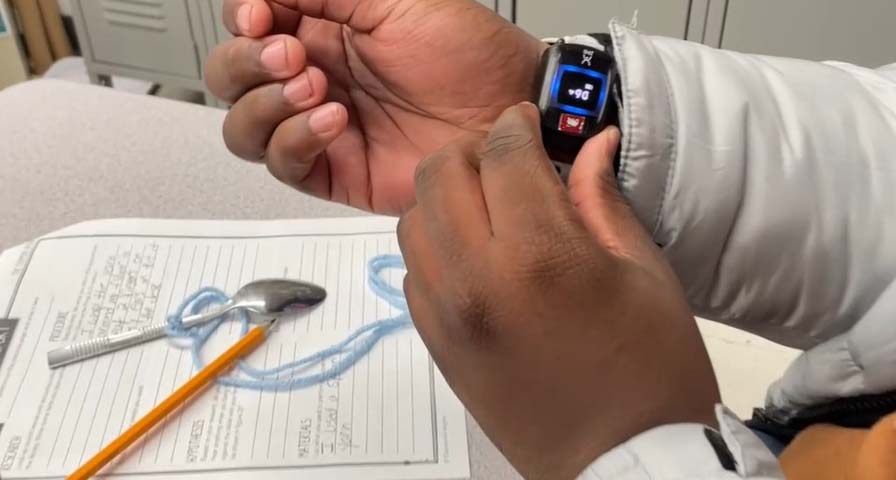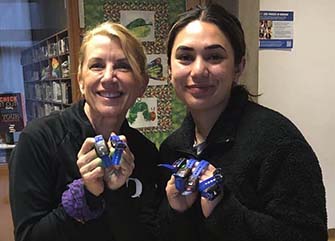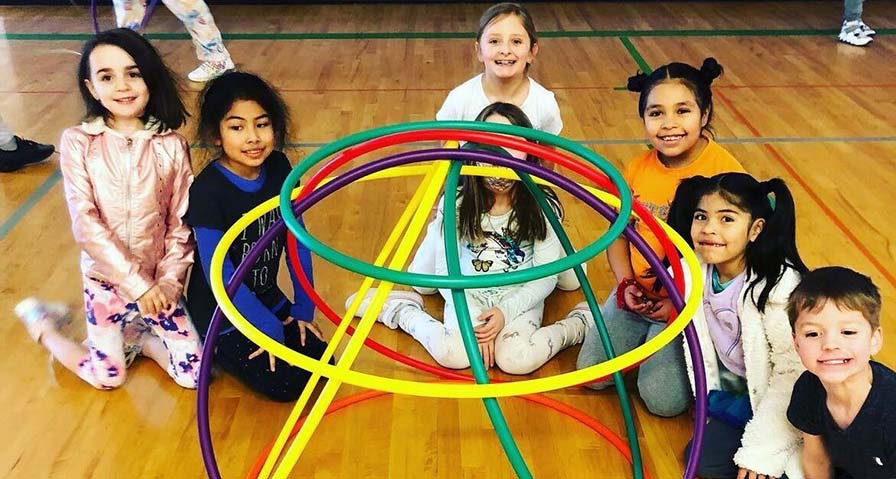
IHT Heart Rate Monitors Provide Key Insights as Students Take Advantage of Opportunities for Physical Activity
An Oregon educational fitness organization uses IHT heart rate monitors to ensure that students receive quality physical education opportunities where school district resources need to be supplemented.
Founded in 2010, Healthy Moves continues to partner with schools to provide vital opportunities for students to get active. Founder Denise Thomas, a dance and fitness enthusiast, said this year that the Jump Start program – a comprehensive before-school activity program tailored to elementary students – remains popular across Oregon.
In the 13 years she’s run Healthy Moves, Thomas has created many programs that get students active. Four districts in the Eugene and Springfield communities include Thomas’ programming in their school days, and IHT has played a key role in Jump Start’s success dating back to 2020.
The Early Birds Get Active
With Jump Start, students come before school starts. Students can get a quick, healthy breakfast before engaging in a 30-minute workout that includes a warm-up, a cardio workout, games, and a cool down so they’re ready to face the day inside their classrooms.
Thanks to a donor, participating students wear IHT heart rate monitors during the session. Thomas said the monitors give students extra motivation to meet workout goals. The monitors also give interested students, parents, teachers and organizers data that includes:
- How many minutes of moderate to vigorous activity students achieve
- A graph of their heart rate throughout the session
- Total minutes spent in each heart rate zone (resting, moderate or vigorous)
“It’s been thrilling to bring the heart rate monitors into it,” Thomas said. “The kids love them. When kids show up and see us there setting up the monitors, you can see them get excited. They see the monitors and you can see them think, ‘Bingo! I was ready to come do this anyway but now I’m really ready.’ Sometimes they want to skip their breakfast and get started, and we have to tell them to go ahead and eat, that we’ll be here when you’re done eating.”
The workout mixes some basic functional fitness activities with other games and activities designed to push the students to work hard while they are having fun.
“They love to get the color to change,” Thomas said. “They know to do that, they have to engage themselves to move a little bit harder, a little bit faster.”
Thomas said feedback she and her facilitators get from the schools is overwhelmingly positive.
“All of the administration and teachers love that the kids are focused on moving and engaging,” Thomas said. “And we can see how the students are moving. Those monitors cannot tell a lie. It’s real and the teachers and administration acknowledge that.”
Utilizing IHT To Organize Fitness Assessment Data
Through Jump Start, students also do some informal fitness assessments, much like they’d get in their PE class through what used to be known as the Presidential Fitness Tests. Thomas uses IHT’s assessment software to collect and manage the results. That allows her to share data with students, core teachers and administrators about progress students make on different fitness tests throughout the Jump Start program.
“We collect that data and put it on a card for each student,” Thomas said. “If we are at a school for 6 or 9 weeks, then we can run the tests several times and the kids can see how they did from the first test to the last.”
Thomas’s team also records the data inside IHT’s software, which allows Oregon Research Institute analyst Jeanette Ricci, who had previously used the monitors during her graduate program at Michigan State University, to show administrators how much moderate-to-vigorous physical activity (MVPA) students are getting over the course of each week.
“We’re collecting this data to show how much exercise, and the levels of exercise, that kids have been having,” Thomas said. “We can show how cumulatively that can go towards the 150 minutes of physical movement the Oregon Department of Education wants Oregon kids to have (in a week).”
The Healthy Moves Origin Story
When Thomas returned to Oregon after living and working in New York, she saw a state school system where many schools didn’t have resources to include physical education programs, for elementary students in particular. Not only were students less active than they needed to be, they struggled with basic physical literacy.
“When we got into our first schools, we saw that kids couldn’t jog around the gym,” Thomas said. “Kids didn’t know how to throw a ball. Kids didn’t know how to jump rope. And that was really mind-boggling for someone who’d been active all my life.”
Many districts were asking classroom teachers – most of whom weren’t trained in physical education – to work movement into their days. Many teachers converted their daily prep periods into makeshift PE sessions. Thomas found they struggled. Along with a business partner, Thomas began approaching districts asking how she could help bring activity to students.
“We went to superintendents at two different school districts and one of them said they had a program called ‘artist in residence’ to teach art classes,” Thomas said. “That superintendent encouraged us to create a ‘trainer in residence’ program. And I said that’s what we’ll do. Why can’t we hire trainers who are experienced working with kids and come in to teach the PE classes and support the classroom teachers?”
Thomas did exactly that. She built a program based on specific modalities and fitness activities so the young students could see the purpose behind the program.
“We wanted to work with the classroom teachers and get kids moving so they don’t think physical education is only tag or running up and down in the gym,” Thomas said. “That’s how we started.”
 As Healthy Moves grew, so did its list of offerings, including the Jump Start program featuring the IHT heart rate monitors. Thomas added the monitors after learning about them from Ricci 4 years ago. As she’s seen the monitors work, she’s become more pleased that students are getting access to the technology.
As Healthy Moves grew, so did its list of offerings, including the Jump Start program featuring the IHT heart rate monitors. Thomas added the monitors after learning about them from Ricci 4 years ago. As she’s seen the monitors work, she’s become more pleased that students are getting access to the technology.
“I love the monitors because they give information that is current at the moment of physical movement,” Thomas said. “The kids love them. The different colors that light up let kids know that they are engaged in mild-to-vigorous movement. They love to get to the red (zone). That makes me very happy that kids want to move!”
Thomas runs Healthy Moves’ different programs while Ricci studies the data the heart rate monitors provide. In addition to providing data to the schools about student engagement and movement, Thomas uses the data to bolster grant applications that help fund Jump Start and other programs.


